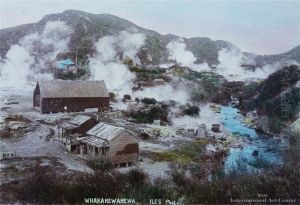Arthur James Iles Paintings
Arthur James Iles was a British photographer born in 1870. He is notably recognized for his work during the early 20th century, particularly his contributions to portrait photography and his documentation of the Edwardian era in England. Although not as widely known as some of his contemporaries, Iles's photographs provide a valuable insight into the social history and culture of his time.
Iles's photographic career began in the late 19th century, a period that saw rapid advancements in photographic technology and practice. He was based in London, where he operated a successful portrait studio. The studio became a popular destination for the middle and upper classes, who sought to have their likenesses captured by Iles's skilled hand. He was known for his ability to portray his subjects with dignity and grace, often utilizing natural light to create soft, flattering images.
In addition to his studio work, Arthur James Iles is also remembered for his outdoor photography, capturing scenes of daily life as well as the relaxing pastimes of the Edwardian elite. His work serves as a documentary record of the period, showcasing the fashion, architecture, and leisure activities of the time.
Iles's career spanned several decades, and throughout that time, he witnessed the transition from the Victorian era to the modern age. His photographs not only reflect the artistic styles of the day but also the shifting societal norms and the advent of modernity that characterized the early 20th century.
The impact of World War I and the subsequent changes in society also influenced Iles's work. Post-war, there was a shift in the cultural atmosphere, which is evident in the evolving styles and moods captured in his later photographs. Despite these changes, Iles continued to work until his death in 1943.
Arthur James Iles's legacy lies in the extensive collection of images he left behind, which continue to be appreciated for their historical significance and artistic merit. His photographs are held in various collections and have been exhibited posthumously, allowing contemporary audiences to glimpse into the world of Edwardian Britain through his lens.
